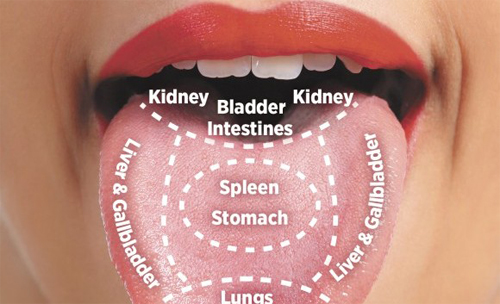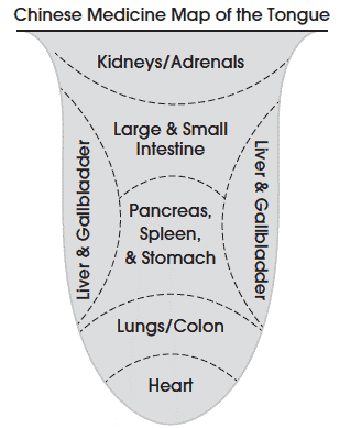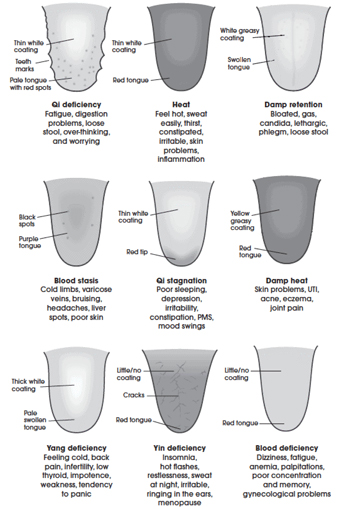What your tongue appearance means for your health, according to Traditional Chinese Medicine
The following is an adapted excerpt from a the book Ancient Remedies: Secrets to Healing with Herbs, Essential Oils, CBD, and the Most Powerful Natural Medicine in History.

Thousands of years ago, Traditional Chinese Medicine (TCM) practitioners didn’t have the benefit of modern technology that allows to peer inside the body. So in order to identify what type of imbalance a patient had, they devised other ingenious strategies, like looking at the tongue, feeling the pulse, and examining the facial complexion.
Based on those diagnostic tools, they would recommend a personalized diet, specific medicinal plants, lifestyle practices, and often perform a treatment, like acupuncture. Here’s a deeper look at the main diagnostic tools of TCM: tongue diagnosis.
Tongue diagnosis is, as it sounds, a way of understanding the root cause of your condition by examining your tongue. So don’t be shocked if a TCM physician asks you to stick out your tongue without saying “Ahhh”.
Just as modern doctors listen to your heart and lungs, Chinese medical practitioners believe the appearance of the tongue holds important clues to your health. They look at four factors: color, shape, coating, and moisture.
– The tongue’s color points to the condition of the blood, qi, yin, yang, fluids, and yin-related organs like the heart, lungs, spleen, liver, and kidneys.
– Its shape can also provide clues to the health of the blood, qi, yin, yang, and bodily fluids.
– The coating is related to yang organs, like the small and large intestines, stomach, bladder, and gallbladder, and can give doctors a sense of where the problem lies.
– And the moisture of the tongue indicates the relative dampness or dryness of the body in general.
What’s more, each area of the tongue is connected to particular organs:
– the tip relates to the heart,
– just behind that is an area linked to the lungs,
– the center of your tongue corresponds with your spleen and stomach,
– the area behind the center is linked to the intestines,
– and behind that, the very back of the tongue is connected to the bladder and uterus,
– the root of the tongue corresponds to the kidneys,
– the sides of the top of the tongue are linked to the gallbladder, and
– the outer edges are linked to the liver.

In the charts bellow you can find some characteristics of the tongue, reported to different ailments.

